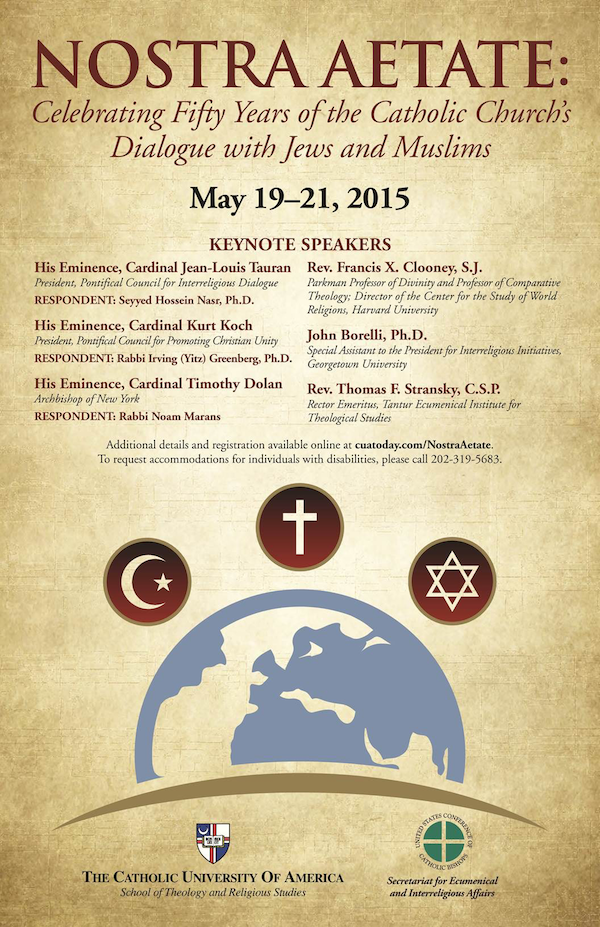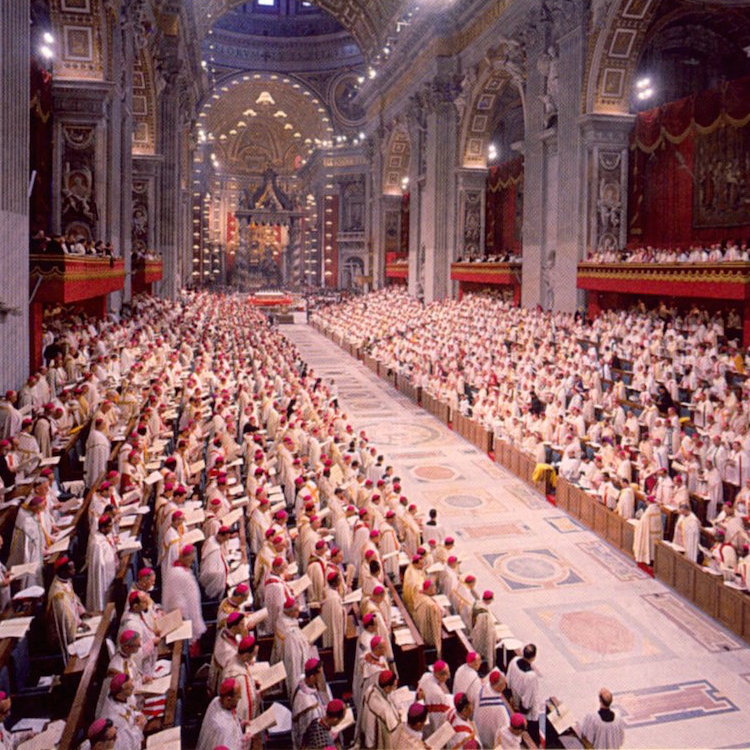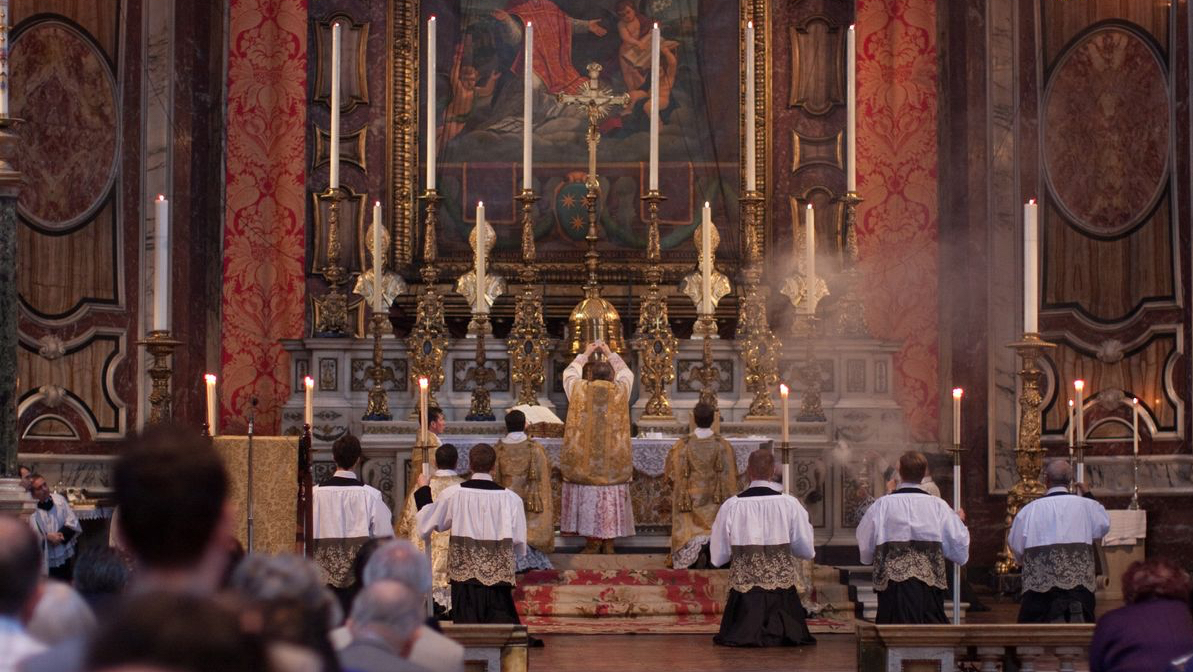On October 11, 2011, with his Apostolic Letter Porta fidei (“Door of Faith”), Pope Benedict XVI declared the Year of Faith would begin on the 50th Jubilee Anniversary of the opening of the Second Vatican Council (Vatican II) the most significant event in the history of the Catholic Church in the last 100 years. During the Year of Faith, inaugurated on October 11, 2012, Catholics were asked to study and reflect on the documents of Vatican II and the Catechism of the Catholic Church. As we approach the final months of the Jubilee window for Vatican II, little has been discussed as to what has happened to Catholic culture in last fifty years and what we can do to revitalize it.
Looking at the Church’s Vital Signs
The Year of Faith was joyfully inaugurated with Masses in dioceses across the U. S. and at several Catholic universities there were symposiums on Vatican II. The discussions proved to be illuminating and addressed the historical context of the Council as well as the content of the documents; however, they fell short in addressing the current reality – according to an April 2015 report by the Pew Research Center, by the year 2050, among the countries that will no longer have a Christian majority are Australia, United Kingdom, France, New Zealand, and the Netherlands.
The Catholic University of American in Washington, D.C. held a significant four-day symposium on Vatican II called Reform and Renewal: Vatican II after Fifty Years, from September 26-29 2012, but the talks didn’t meet the billing with regard to providing a “reflection and discussion of the impact that this great ecumenical council continues to have on the very life of the Catholic Church.” The talks, which included a thought provoking keynote address by Most Rev. William Cardinal Leveda, spoke mainly about values of reform or the hermeneutics of continuity/discontinuity. However, there was little on the impact of the Council on the “life” in the Church today.
Given the significant attenuation in the vital signs of Catholic life in the last fifty years, as attested to by the Frequently Requested Church Statistics at the Center for Applied Research in the Apostolate (CARA) website, one is left wondering where is the post mortem on the last fifty years? What was the interior ecclesial context or methodological missteps that caused, or promoted, the radical decrease in Catholic priests, religious sisters, Catholic schools (students), marriages, baptisms and a number of other vital metrics?
Vatican II had the great vision of bringing the lay faithful into greater “participation” in the liturgy and life of the Church – a vision that has undoubtedly borne much fruit on the individual level – yet the post-Vatican II statistics on Mass attendance and the participation of laity in the life of the parish, tells a conflicting story when compared with the successful narrative of “greater participation” after the Council. How are we to evaluate the meaning of “greater participation” when less than 25% percent of Catholics are attending Mass on any given week (down from 55% in 1965)? I think the time has come for a pastoral hermeneutics of Vatican II, relative to the life of the Church, so that we can clearly determine what worked, what didn’t, and why.
An Opportunity for Reflection and Discussion
We are still within the Vatican II Jubilee window (2012-2015) and still have the opportunity to make the jubilee a real time of “reflection and discussion” on the post-Vatican II impact on the life of the Church. The jubilee anniversaries of each of the four constitutions would present a wonderful platform. Unfortunately, two anniversaries – that of Sacrosactum Concilum and Lumen Gentium, that profoundly affected the life of the Church and beautifully articulated the nature of the Church and her liturgical life – have already passed with sparse discussion, let alone a robust pastoral hermeneutic.
What if, each of the jubilee anniversaries of the four Vatican II constitutions was celebrated with a Mass of thanksgiving in each diocese of the U. S. and followed by a real world discussion, not so much on what the documents say, but on how the principles of the documents were implemented in the Church. An analysis of the positive and negative impact these implementations had on the life of the Church would then allow for concrete recommendations on how to pave the way forward in the “new evangelization.”
Some of the decrees and declarations of the Council also had major impact on Catholic life and beyond, and should also have celebrations and discussions associated with them. For example, the document Unitatis Reintegratio (Decree on Ecumenism) opened a vast new horizon on ecumenical relations between the Catholic Church and other Christian ecclesial communities. The anniversary of this document went surprisingly uncelebrated given the ecumenical emphasis during, and after, the Council. This was another missed opportunity, especially given the anemic state of ecumenical dialogue in the West today compared to the years immediately following the Council.
The Declaration On Religious Freedom, Dignitatis Humanae, promulgated on December 7, 1965, will be celebrating its jubilee anniversary this coming December 2015. There is no other document of Vatican II more relevant for our current times given the abhorrent violations of human rights and civil freedoms under the guise of religion. This is an area where I believe the Church has a great deal to contribute and opportunity to take a leadership role.
One sign of hope is the efforts of the USCCB, Secretariat of Ecumenism and Interfaith Affairs, in planning a symposium from May 19-21 of this year on Nostra Aetate, the Declaration On the Relation of the Church to Non-Christian Religions. The celebration will be held at the Catholic University of America and will celebrate fifty years of Catholic dialogue with Jews and Muslims.
 Perhaps this celebration will set a trend and generate similar symposiums at Catholic universities in the U.S. on Dei Verbum and Gaudium et Spes – the two other constitutions of Vatican II whose jubilee anniversaries are in November and December 2015, respectively. Dei Verbum especially, considered to be the most important of all the Vatican II documents because of its response to the “crisis of Christology” experienced in the West, will deserve a special treatment. It is my fervent hope that a spiritually productive pastoral hermeneutics will emerge for this exceptional Vatican II dogmatic constitution.
Perhaps this celebration will set a trend and generate similar symposiums at Catholic universities in the U.S. on Dei Verbum and Gaudium et Spes – the two other constitutions of Vatican II whose jubilee anniversaries are in November and December 2015, respectively. Dei Verbum especially, considered to be the most important of all the Vatican II documents because of its response to the “crisis of Christology” experienced in the West, will deserve a special treatment. It is my fervent hope that a spiritually productive pastoral hermeneutics will emerge for this exceptional Vatican II dogmatic constitution.
Looking Beyond the Jubilee Window
Yet, it is probable that the Vatican II jubilee anniversary window will completely close at the end of this year and no significant progress will have been made in bridging the gap between what the research data is telling us about Catholic life ad intra and local pastoral plans for the future. Research efforts have to continue into the future analyzing and evaluating the current pastoral landscape and generating recommendations for change. The purpose of this endeavor should be clear – to ensure the renewal of Catholic life as envisioned by the Council.
One area that demands urgent attention because of its direct impact on the future of the Catholic Church is Catholic education. According to CARA, the data for the last 50 years indicates that there has been a loss of 26% in Catholic colleges and universities, 22% in secondary schools, and a staggering 49% in elementary schools. You would expect these losses in Elizabethan England but not in the U.S. The implications of the last statistic are grave. Who will be filling Catholic secondary schools and colleges if the majority of Catholic families have been priced out of the market at the grade school level? If most families, especially Catholic immigrant families, have no option but to place their children in public schools where there is a systematic indoctrination into a secular worldview, what is the future of Catholic “life” in the America?
In Gravissimum Educationis, the Vatican II Declaration on Christian Education, the Council Fathers stated, “All men of every race, condition and age, since they enjoy the dignity of a human being, have an inalienable right to an education” (n. 1). This education includes the “ability to judge rightly, … , to foster a sense of values, [and] to prepare for professional life” (n. 5). These values and virtues are increasingly becoming scarcer in the public school system and therefore in Catholic children who at best receive one hour a week of catechesis when parents care enough to matriculate them in a CCD program. A pastoral hermeneutics that looks at the systemic problems in Catholic Education should be used to come up with concrete solutions like blended learning, which is transforming the educational landscape, and making quality education more affordable. Other options include tapping into the vast army of college educated stay-at-home moms and dads, as well as the growing pool of retired professionals that are financially stable and looking for volunteer opportunities. Every stay-at-home mom I have asked, would jump at the opportunity to teach for free if their kids could attend their Catholic school tuition free. Many retired professionals, who want to give back to the community, would also jump at the chance to teach for free if that would mean making Catholic school more affordable. These are out-of-the-box solutions that have great potential.
Learning From What Works
There is no escaping the central problem that although Vatican II called for a renewal and maturing of the Catholic faith, the faith seems to be ironically losing its appeal for many Catholics in the U.S. – even for traditionally Catholic immigrants groups like Hispanics. In a poll released last May 7, 2014 by the Pew Research Center, the share of Hispanics adults who are Catholic has declined from 67% in 2010 to 55% in 2013 – a 12% drop in just three years. Most of these are just gradually drifting away or have stopped believing in the Church’s teaching probably because they never were taught it right to begin with. The reality is that most children are confirmed without knowing the basics of the faith and most couples are married with very little preparation.
Yet, there are areas and sectors in the Church in the U.S. where the story is quite different. The pastoral question of course is – What is it that is working? There are dioceses, religious orders, and Catholic universities and schools where Catholic identity and vitality have not only survived but been renewed.
Two examples will suffice – while the number of religious sisters in the U.S. has plummeted from 179,954 in 1965 to 49,883 in 2014 (a decrease of 73.3%) the Dominican Sisters of Mary, Mother of the Eucharist founded in 1997, have outgrown the motherhouse in Ann Arbor, Michigan with 110 sisters, and they are getting between 10 and 20 new vocations per year. What are they getting right? The community is faithful to the Magisterium and strong in their Catholic identity.
Also, when we look at which dioceses are getting the highest ratio of seminarians to Catholics, we will find according to an article by Jeff Ziegler in the July 2005 issue of Catholic World Report, that “there is no better vocations awareness ‘program’ than the witness of faithful, dedicated, and joyful men serving Christ and His Church as a committed priest.” The key word in both success stories is fidelity to Church teaching and Catholic identity. The very opposite is found when we look at religious orders or diocese where there is a rampant dissent from Church teaching and poor Catholic identity.
Logic would follow that the formula for success is clear. Unfortunately, conservative and progressive politics often get in the way. What is undeniable however, is that time is running out for many Catholic families and Catholic institutions. Pastoral solutions require a robust pastoral hermeneutics of where Church life is today and how we got here. Technology will help in providing the solutions; we just have to have strong and faithful leadership that is not afraid to ask tough questions and less afraid to come up with effective solutions.






